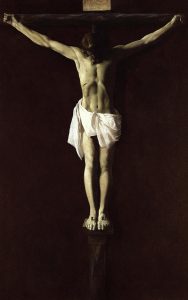Themes within the 16th century Reformation is a key piece to Tracy Chevalier’s Girl With A Pearl Earring. Historically, The Reformation of this time is credited to splitting Western Christianity into two different practices: Roman Catholics and Protestants. While both originating with Christianity, these two different practices expected different from their church. Separating the church in such a drastic way created different communities, that in some ways more than others, seemingly resented each other. This resentment is a prominent theme in Greit’s character.
 A significant conflict in this story for not only Griet, but much of 16th century Europe, is the division between religions. Griet, coming from a Protestant family, is unfamiliar with the Catholic religion and its followers, being only surrounded by a Protestant community throughout her young life. Much of her own troubles with the Catholic religion is manifested into fear. This fear becomes a deep issue for Greit as she is introduced into a family of Catholics as their maid. It is important to remember that much of the Protestants and Catholics at this time did not coincide with one another, and instead found their religion to be a piece of their identity and culture. This contributed greatly to the social division between the two communities in Europe. Griet finds this piece of identity to be one that forms them to be completely different then herself. As she is introduced into the house of Catholics, she thinks of herself as “outnumbered” (Chevalier 31). Greit seems to carry a strong form of ‘Me vs. Them’ mentality, weaponizing her own religion against the family she works for. This ideology represents much of the communities in Europe in this century, in which these two different groups of people use their faith against one another.
A significant conflict in this story for not only Griet, but much of 16th century Europe, is the division between religions. Griet, coming from a Protestant family, is unfamiliar with the Catholic religion and its followers, being only surrounded by a Protestant community throughout her young life. Much of her own troubles with the Catholic religion is manifested into fear. This fear becomes a deep issue for Greit as she is introduced into a family of Catholics as their maid. It is important to remember that much of the Protestants and Catholics at this time did not coincide with one another, and instead found their religion to be a piece of their identity and culture. This contributed greatly to the social division between the two communities in Europe. Griet finds this piece of identity to be one that forms them to be completely different then herself. As she is introduced into the house of Catholics, she thinks of herself as “outnumbered” (Chevalier 31). Greit seems to carry a strong form of ‘Me vs. Them’ mentality, weaponizing her own religion against the family she works for. This ideology represents much of the communities in Europe in this century, in which these two different groups of people use their faith against one another.
New to this culture, Griet is made uncomfortable by several of the catholic paintings within the house, including one particularly disturbing image that hangs in the cellar where she is to sleep. “It was another picture of Christ on the cross, smaller than one upstairs but even more disturbing” (Chevalier 30). This image is so disturbing for Greit, that she finds herself struggling to sleep underneath it. This contributes to her own hesitant nature towards Catholics she lives with. Art in this time period symbolized many things to the European people. Art was apart of identity and customs, holding heavy significance in every piece. Griet, already fueled with her own fears, becomes greatly intimidated by this painting as it looms over her as she sleeps. This painting is symbolic to how the Catholic religion looms over her in her every waking moment in the Catholic household. As a protestant, she feels threatened. It’s as if her identity as a Protestant is being violated with the very existence of this painting.